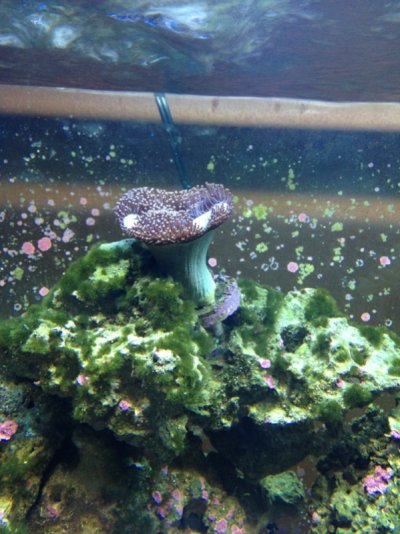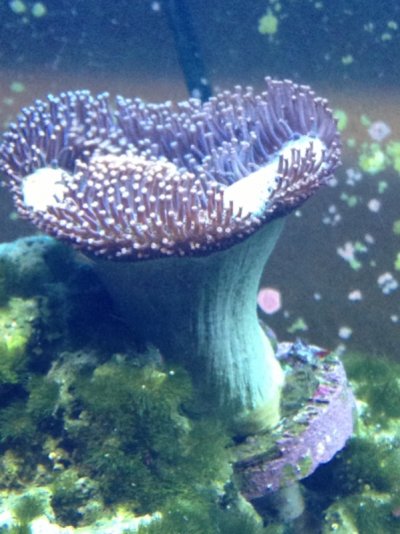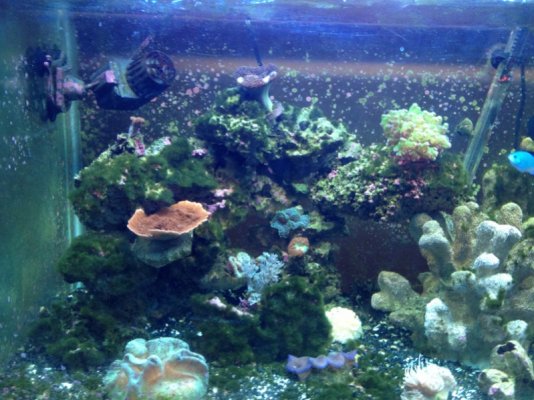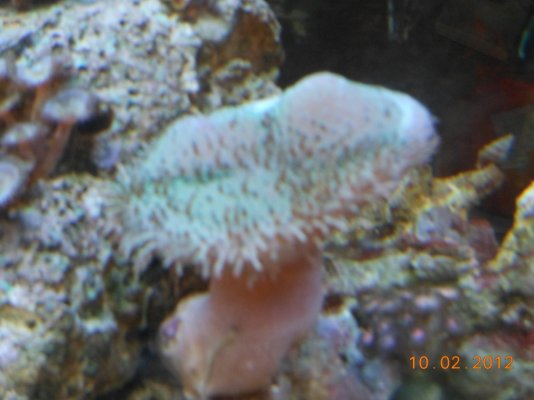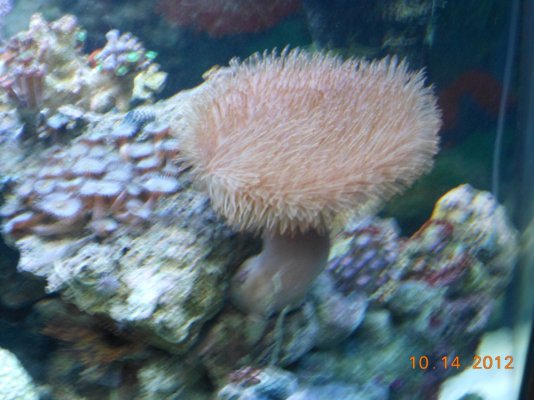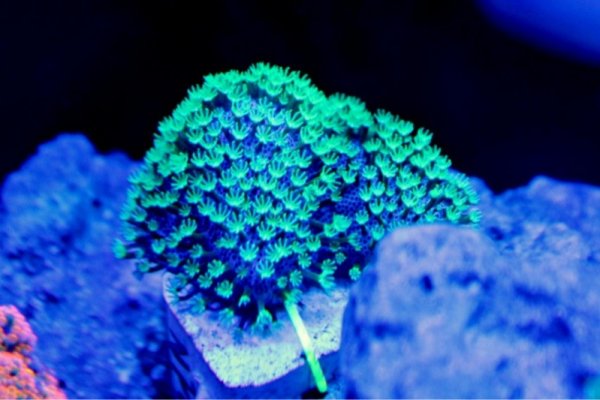Well, increased stress could cause it. I'm in agreement with waht was said above, the algae is out of control. I'd put money that your phosphate reading, and possibly even nitrate, is 0 because the algae is consuming all of it.
Are you using RO/DI water? Tap water could be leading to his issue as well.
Either way, the issue needs to be solved. Continue with your weekly 10% water changes, making sure you are using ro/di water. Prior to these changes, remove as much of the algae is possible. Just grab it and pull it out.
It was suggested that you get some snails and hermits to help you with this issue, and I am in full agreement of this...though I would suggest the possible addition of an algae blenny as well. I had a hair algae issue when my reef first started up, through sparce feedings and ro/di...which I didn't notice my resin needed changed! Through manual removal and water changes I just couldn't make headway. The addition of an algae blenny was a great help and the issue was solved. He is still in my tank, many months later fat as can be. Valued member of my CUC, but I do feed blood worms biweekly to make sure he is fed.

